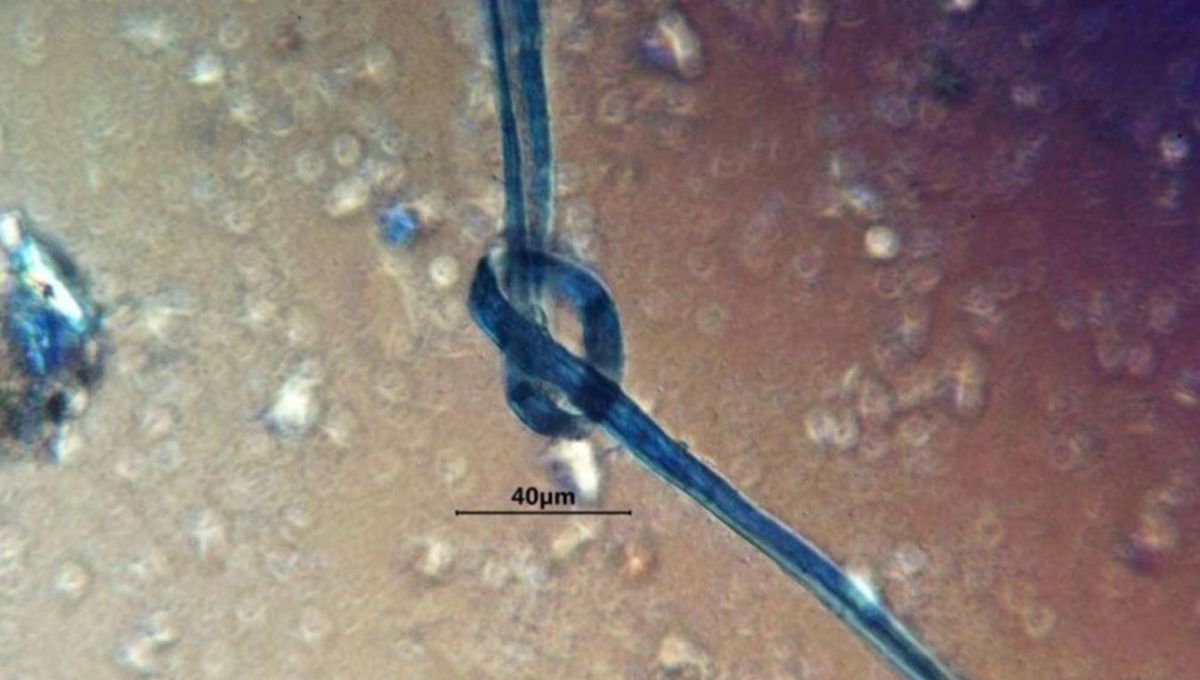
Archaeologists excavating Belize’s aptly-named Midnight Terror Cave think they may have found shreds of Mayan death gags that once silenced the victims of human sacrifice. Rummaging through the dental remains of those who were slain in the infamous cave, the researchers discovered bright blue fibers lodged between some of the victims’ teeth.
First discovered in 2006 and later named by members of a nearby Mennonite community, the Midnight Terror Cave is littered with bones belonging to at least 118 individuals who were offered to the gods by the Maya. Attempting to learn more about what these poor tributes ate, researchers analyzed the calcified plaque – or calculus – on their teeth.
Unable to scrape much plaque off the ancient chompers, the team eventually got enough calculus together to make up two samples. “Aside from organic components, both samples were found to contain blue fibers,” they write in their paper.
“Given the time frame needed to encase the fibers within calculus, the fibers were introduced several days or weeks prior to death,” they explain.
The color of the thread is particularly interesting because a pigment known as “Maya blue” has previously been associated with important ceremonies and rituals. Made from the plant Indigofera guatemalensis, the pigment was sometimes painted onto the skin of sacrificial victims, and its possible presence on the fibers may indicate that they were of ceremonial importance.
“The blue color of the fiber is significant in suggesting that it is related to ritual,” explain the study authors.
Unfortunately, however, the delicate nature of the threads means that they cannot be transported to a laboratory for chemical analysis, so the researchers can’t say for sure if the pigment is actually Maya blue. What they can say, however, is that at least two, but likely more, sacrificial victims appear to have the blue fibers lodged between their teeth, indicating that they “had similar experiences before their deaths.”
Previously, blue strands have been found in the calculus of human sacrifice victims at Aztec temples in Mexico, some of which may be attributable to the consumption of a blue alcoholic drink called pulque, which is made from the maguey plant. However, the study authors say that the Midnight Terror Cave fibers appear quite different to those found in pulque.
They, therefore, hypothesize that the fibers may indicate the use of “gags as the victims were paraded from town to town, then to the sacrificial site.” Evidence of gags has previously been discovered at other sacrificial sites in Mesoamerica, while reports from Spanish conquistadors describe tributes being held in custody for lengthy periods as they were danced around multiple villages before being dispatched.
“This extended time period would permit fibers from gags to be incorporated into calculus even if victims were not continuously gagged,” write the researchers.
The study appears in The International Journal of Osteoarchaeology.
Source Link: Human Sacrifice Victims In Belize’s Midnight Terror Cave May Have Been Gagged